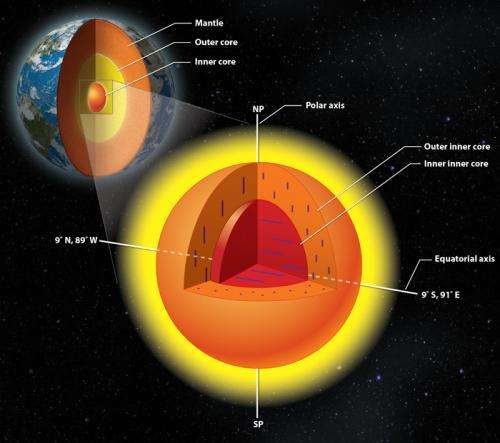February 16, 2015 report
Best of Last Week: Big Bang singularity, unlocking Earth's inner core and another problem with antibiotics

(Phys.org)—It was an intriguing week for physics as a pair of theorists suggested that their quantum equation predicts the universe has no beginning and thus there was no Big Bang. In their paper published in Physics Letters B, Saurya Das and Rajat Bhaduri, suggest their math shows that the universe has existed forever and that it may also account for both dark energy and dark matter. Also, some at this year's American Association for the Advancement of Science meeting have been hinting at the possible discovery in 2015 of a new particle in physics—due, they suggest, to the LHC coming back online, twice as powerful as before. Meanwhile, another group suggested that on quantum scales, there are many second laws of thermodynamics—they think there are whole families of them at extremely small scales.
In other news it was recently noted that some researchers are using the DOE's Fermilab Dark Energy Camera to unveil small objects in our solar system—the 570-megapixel camera is being used by some to track space junk, asteroids and other objects. Also a team of geologists described how they are attempting to unlock the mysteries of the planet's inner core by applying a novel application of earthquake reading technology and have found that our planet's inner core itself has an inner core, too.
In other news, the world's first rotary 3-D printer-cum-scanner was unveiled at the AAAS meeting—called the Blacksmith Genesis, it allows novices to scan an item, edit it and then print it. Also another team of researchers found that coral snake venom revealed a unique route to lethality—turns out it is a toxin that activates a certain kind of nerve cell protein that prevents cells in victims from resetting and ultimately leads to seizures in prey. And yet another team found amber fossil links to the earliest grasses, dinosaurs and fungus used to produce LSD—in Myanmar. Another team has found that a common plant extract fights brain tumors—silibinin, used to treat victims of poisoning and some liver diseases has been shown to be effective in treating Cushing's Disease, where a tumor grows in the pituitary gland.
And finally, if you have been taking medications to get rid of an infection, it might interest you to know that a team of researchers has found that the unwanted impact of antibiotics is broader and more complex than previously known—they found that the drugs have a much bigger impact on the microorganisms that live in our gut, than has been thought, further complicating their use.
Journal information: Physics Letters B
© 2015 Phys.org





















